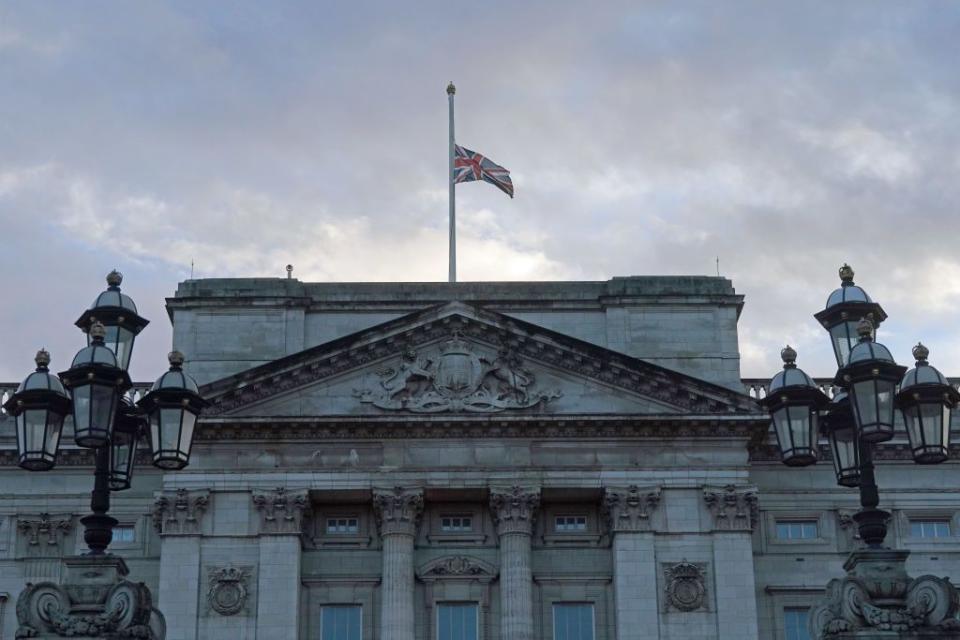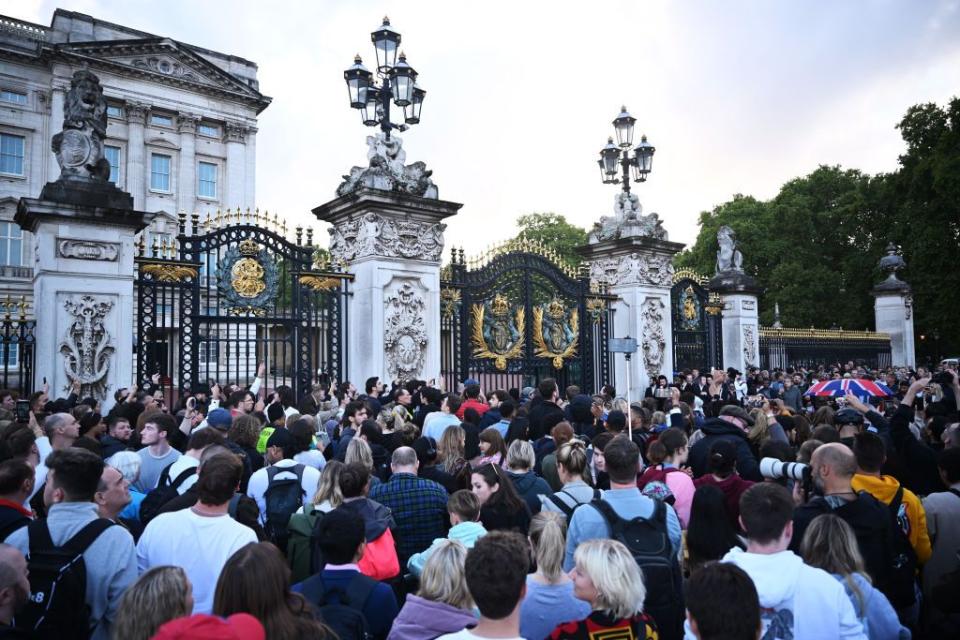Laying the First Flowers Outside Buckingham Palace
- Oops!Something went wrong.Please try again later.
They stood in a stupor, thousands of people at the end of a gray, drizzly day in London, before Buckingham Palace. They wore tailored suits, or running shoes, or tourists’ cargo shorts. They were motionless, hands on hips, or folded; some sat in wheelchairs, some gently rocked strollers back and forth, some leaned on each other. Not talking. Not crying. Eyes fixed on the palace’s empty balcony, where only a few months ago an even larger crowd had seen Queen Elizabeth II wave in gratitude for the nation’s Platinum Jubilee, celebrating her seventy years on the throne.
And then: There was no announcement—no voice over a loudspeaker, no reading of a terse statement. The official communication was simpler, more elegant: With those thousands of eyes upon it, the Union Jack atop the palace began its slow descent to half-staff, and the people gasped. Some put their hands over their mouths. Others just watched.

Queen Elizabeth had died 25,782 days after becoming queen. Minutes later, the sun set, even its heart too heavy to continue. Moritz Van Elsebergen, 34, a tourist from Frankfurt, had been at an Italian café nearby when suddenly the music stopped and everyone’s phones lit up at once. He grabbed a simple bouquet from a grocer and walked to the Palace to prop it in the gates. “After all her service, not just to her country but to the world, it seemed like a small service I could do in return,” he said. They were daises, symbol of motherhood in the Victorian language of flowers.
Unofficially, his were the first flowers on the scene.
A few men broke into a haunting, ragtag rendition of “God Save The Queen.” But mostly people stood silent. Many Britons have seen not just the entirety of their lives under her reign, but the entirety of their parents’ and grandparents’ lives as well.
“It’s pretty shocking,” said Rachael Tyler, a 24-year-old fashion student. “It wasn’t coming, then it just happened. I mean, she had just welcomed our new prime minister the other day.”
Paulina Lejarza, 23, who recently graduated university, thought of the recent slew of televised versions of the monarchy. “I love The Royals. The Crown. The drama. But this doesn’t feel like drama. It feels too real to be history. I guess this is history in the making. I feel the heaviness of it. My heart is heavy with it.”
“Nobody knows what to do,” said Katie Garwood, a graphic designer who took a photograph of the double rainbow that appeared over the Palace late in the afternoon. “Nobody is talking. Nobody is crying. Nobody is moving. It’s like all of London has gone so still and so quiet. It’s so surreal.”

Her Majesty wasn’t Susan O’Mahony’s queen. O’Mahony, 66, is Irish. But she loved the Queen all the same. “It’s so upsetting,” she said. “Just impossible, as my husband would say.”
James Kimani, 17, a grammar-school student, had got out of school nearby and walked to the Palace because it’s “a culture hub.” “The whole world has kinda stopped,” he said. “Everyone has grown up with her. She was a constant. How does a constant leave your life?”
Richard Morgan is a writer in New York and the author of Born In Bedlam, a memoir.
You Might Also Like

